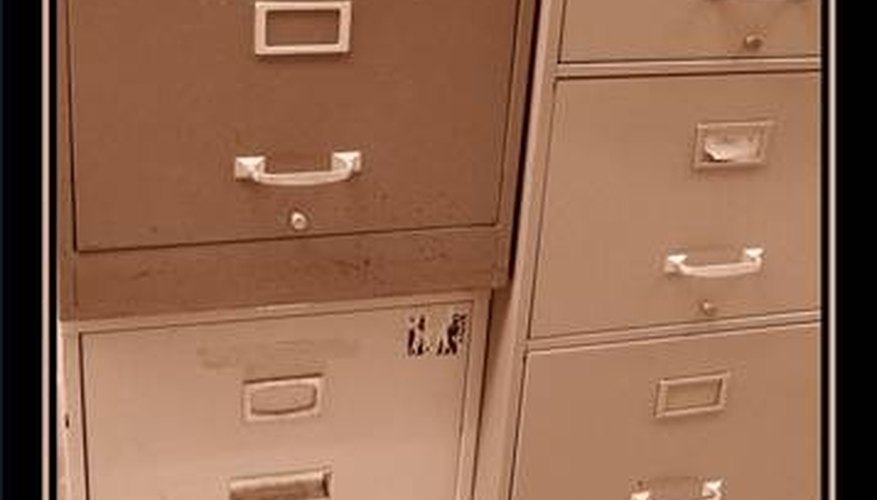If you’ve lost the keys to a filing cabinet, you know the frustration of not being able to get at important papers, research materials or maybe just your lunch. You might be tempted to take apart the cabinet, but with a little effort and ingenuity, you can open it without a key in time to complete that pressing project or enjoy your lunch before it spoils.
The easy way
The lock mechanism in most filing cabinets works by lowering a metal bar that runs the length of the cabinet, preventing the drawers from opening. If you push the bar up, the drawers will open. Before you resort to attacking your locked cabinet with tools, try this trick: Tilt up the front of the filing cabinet and feel along the right side of the bottom, toward the front. You should find a hole. Poke your finger into the hole and you’ll feel the end of a metal rod. Push up on the rod and this should release the locking mechanism so the drawers can open. This is easier to do if you have a co-worker who can hold the filing cabinet while you push up on the metal bar.
- The lock mechanism in most filing cabinets works by lowering a metal bar that runs the length of the cabinet, preventing the drawers from opening.
- If you push the bar up, the drawers will open.
If you need to save the lock
Not every cabinet will open this easily. If yours doesn’t have access from below to the locking bar, you need to find a way to turn the locking cylinder, which is tougher without the key. Most locks will have a number on the front of the locking cylinder. Make note of this number and head for the nearest used office equipment dealer. Look for a filing cabinet with the same number on the lock cylinder. The key for that cabinet will open yours. You may be able to talk the equipment dealer into selling you a single key or letting you borrow his to open your cabinet or take to a locksmith to get a new key made. Another option is to pick the lock using a pair of paper clips. Straighten one end of one paper clip. Straighten the end of the other clip and bend it into an L shape. Push the L shape clip into the bottom of the keyhole and hold it. Insert the straightened pin into the top of the lock. As you wiggle this clip, you should be able to feel the lock pins. Apply tension on the bottom clip toward the direction you would turn a key in the lock, either clockwise or counterclockwise. Apply tension upward, against the lock pins, with the straightened paper clip, as you quickly remove it from the lock. You may have to try this a few times, but when you find the right combination of tension on the bottom paper clip and action on the lock pins with the top paper clip, the lock should pop open.
- Not every cabinet will open this easily.
- You may have to try this a few times, but when you find the right combination of tension on the bottom paper clip and action on the lock pins with the top paper clip, the lock should pop open.
Last resort
If none of the above methods work, you may have to bust the lock to open the drawer. You can drill it out with a power drill. Or insert a screwdriver in the lock and hit it hard with a hammer. A few sharp blows should pop the lock.
- If none of the above methods work, you may have to bust the lock to open the drawer.
- Or insert a screwdriver in the lock and hit it hard with a hammer.
